The set theme is Love and Hate, and this week he changed his format: He's looking for a set keyword to represent love.
There are many resonant fantasy themes for cards that form relationships with other cards, and I'd like to explore some today.
The criteria of love reminded me of a card that I designed for an art-down contest last year:
I like the card because it tells a story - a story ripped from the song Puff the Magic Dragon.
However, the text is so long that I had to put the image at maximum size for this blog. In addition, the keyword does feel somewhat clunky and weird.
The reason the keyword looks clunky must be because there's multiple elements packed into it. I tried to pull out some elements out of the reminder text and onto the main card.
(Click on image to enlarge)
With this one, it's the Wizard that gets sacrificed. Now that I left it out of the reminder text, I can have variations like that, or not have any sacrifice at all.
The +1/+1 counter is still there to help remember the creature that was chosen. Also, I want the mechanic to have the flavor that the befriended creature gets bolstered through the friendship.
But using +1/+1 counters still feels weird because placing one on a creature usually represents a reward, not a cost or condition for an alternate mode. It's possible to use a "pact counter," "love counter," or a "friend counter" instead. That would make the intent clearer and the mechanic would look less weird.
I do want to use counters that have a natural function if able. Trying to explore a little more:
This example shows that Befriend doesn't need to be a cost reduction effect.
Also, Befriend can work with a wider category of things like "Human," "white creature," or just "creature."
Finally, this example shows that if the card helps the creature it befriended, the +1/+1 counter doesn't feel so weird.
What a loyal friend. You can almost hear this guy imploring you, "Become who you were born to be!"
I think Elf Mentor is pretty good as a card that represents a parenting type of love, but there could also be a variant mechanic that represents a type of relationship between equal partners like a friendship or romance.
(Click on image to enlarge)
This is a Romeo and Juliet situation where if one of them dies, the other dies of despair. But I called it Bond because if I called it Love, it might disturb some people when the mechanic creates some controversial relationships between cards.
This mechanic has some tension. You must judge whether or not to use the counters and risk getting 2-for-1ed.
There's some tricky uses for it as well - you can choose to put the counter on a creature an opponent controls to create some war field dilemmas and drama.
However, this kind of tension isn't enjoyable for all players. It's also swingy because it has vastly different results depending on whether your opponent has removal or not. For a more all-upside card, I designed this.
(Click on image to enlarge)
Once you kill a man or his pet wolf (or his buddy or lover, for that matter) the remaining partner attacks you with redoubled fury.
I like this one the best for the gameplay scenarios it produces.
This doesn't really need to put a counter on itself; it could just start out as a 3/2. But I had it put a counter on itself as well as its friend, because if there are two creature cards placed side by side that are marked with the same mark (a counter), it should feel like they're a special, linked pair.
I like this one the best for the gameplay scenarios it produces.
This doesn't really need to put a counter on itself; it could just start out as a 3/2. But I had it put a counter on itself as well as its friend, because if there are two creature cards placed side by side that are marked with the same mark (a counter), it should feel like they're a special, linked pair.
The way it's worded, you can put both counters on itself to make it a 4/3 if you want to. I think that's a neat feature, but it might cause a dispute among players who just read it as ordinary English, so I may need to find better wording.
So, these are my keyword mechanics for love. There could be many more approaches, including ones that don't use counters, and ones that don't necessarily appear on creature cards.
I hope you enjoyed it, and please tell me which version you think works best for representing the concept of love.
I hope you enjoyed it, and please tell me which version you think works best for representing the concept of love.

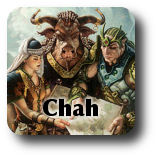

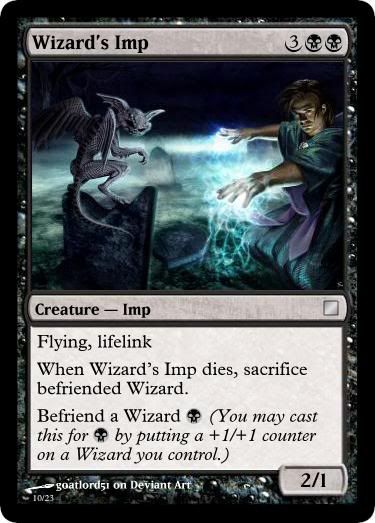

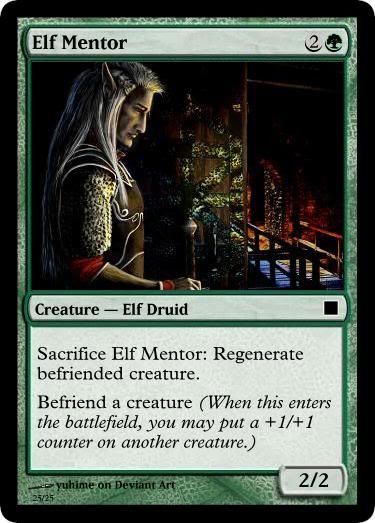
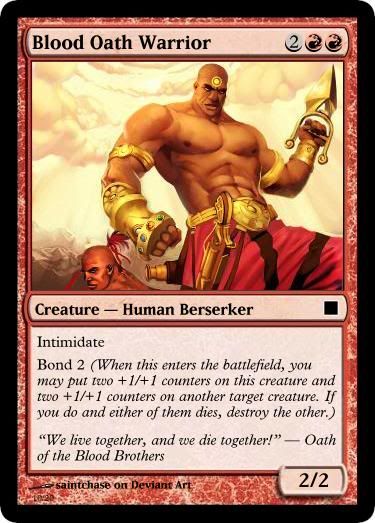
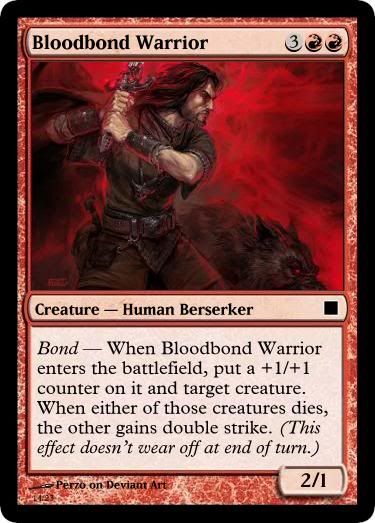
These are all solid concepts, but none of the keywords strike me as elegant. I'd try:
ReplyDeleteBond(As this creature enters the battlefield, it bonds to another target creature.)
Most of your card concepts work, but this gets rid of the +1/+1 counter issues. I wouldn't try to get tricky with alternate costs, as that just causes timing problems. It's templated off of Haunt, and would be easy in terms of game play to represent by putting the cards next to one another.
You're totally right about the timing issues. It would cause confusion if someone tries to respond to the +1/+1 counter.
ReplyDeleteI guess it could just work like an Hunter of Eyeblights except it has a positive effect.
I still think that many of these cards (such as the Elvish Mentor) would feel more like friendship or love if they give a +1/+1 counter.
If a creature with first strike, regeneration, lifelink, or vigilance gets +1/+1, that could make a big enough difference that it plays a different role in some games than it did in other games.
Friendships are precious chance encounters that nuture people and let them change and grow, and I think this feels like that.
I also think it's significantly easier to remember if you use counters. Creature cards get moved around during attacks. Some of the effects like Bloodbond Warrior kick in after one of the creatures die.
Besides that, I expect that just having a visual cue on the cards is much more potent than having only a mental note. If you could put the cards on top of each other, that would stand out well, but you can't because they're both on the battlefield.
Which reminds me, this could cause a lot of trouble in multiplayer games where you befriend an opponent's creature for political reasons. I should make it just affect things you control.
You're probably right about not needing an alternate cost. The "ritual" ones aren't worth the risk. The "kicker" ones like the Pegasus could just cost 3W to start with, and be changed to affect any creature. I could even make it so it can choose to place a counter on itself. That reduces the tension of "should I cast it now or wait?" Flavorwise, it's stronger if it's not carrying a load.
I mean, while true that creatures "generally" get moved around a lot, if you give players a mechanical reason to keep them together it becomes an easy shorthand. I mean, if these cards were all in a block, it wouldn't take long until every creature had a few +1/+1 counters on them and your easy short hand becomes confusing. Granted, that happens with Bond as well. I mean, you could easily imagine playing a few creatures with bond to the point that Creature A is Bonded with B and B is bonded with C and creature C gives flying to creatures it's bonded with, but then creatures A and B attack. Who can you block? Then you try to add words: Bond(As this creature enters the battlefield, it bonds to another target unbonded creature you control.) Before long, it just becomes a mess.
ReplyDeleteTrue, it might be the reason Simic graft gives bonuses to all guys with +1/+1 counters, no matter how it got them.
ReplyDeleteMy mechanic might end up being a 1-shot graft...
*Cough* flightless dragon *cough* (in the first and second best flying colors, no less.)
ReplyDeleteAnyway, you *could* stick in a bunch of Aegis Angel weirdness and memory issues plus tiddlywinks (and dreadful 2-for-1 punishment for playing the game the card asks you to play) at common, but if you're being realistic you have to recognize your "friendly" mechanics are anything but, and would never get printed in a real set.
Ballyrush Banneret seems like a good place to start brainstorming friendly mechanics. Whatever you do, make sure:
- Your common mechanics don't result in board states that can't be evaluated without knowledge of prior turns.
- Players don't have reason to ask why a creature can't be friendly with itself.
- The template doesn't cause players to scratch their heads and wonder at a benefit being called a cost.
- All upside, baby.
I really like the flavour. The Pegasus is particularly good.
ReplyDeleteHow about, "Befriend a [type] (When this enters the battlefield, put a befriended counter on it an another [type] you control."
Then use the Phylactery Lich type of technology to ignore memory issues, and just make it care about what is befriended.
For example,
Befriend a Human (When this enters the battlefield, put a befriended counter on it an another Human you control.)
Flying
Other befriended creatures you control have flying.